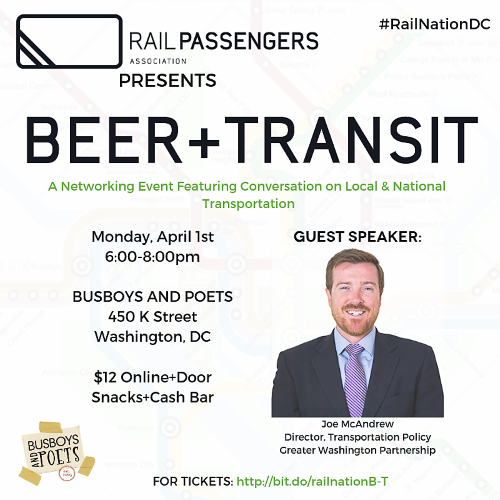Happening Now
It’s All About That First and Last Mile
March 14, 2019
Forget A & B - How Do You Get To Points C through G?
by Joe Aiello | Northeast Field Coordinator
“I hear the train a comin'. It's rollin' 'round the bend” - Johnny Cash
Once the train gets “on down to San Antone” - how is everyone getting around?
When we were in Miami back in October, I was tasked with creating a first/last mile panel to give a local view of a universal transportation issue in this country. It’s something that I have been working on for some time here in the Northeast and, as the Regional Coordinator, I wanted to shine a light on the topic. We had representatives from the Miami-Dade TPO, Uber, The Underline, and #SmartMiami. It was a great discussion and gave those in attendance a number of tools to bring home to their cities and towns.
So it’s based on this that I was asked to submit a proposal for the 2019 Rail~Volution Conference.
For this week’s blog, I’d like to share some of that submission…
Moving commuters frequently and efficiently through various means around a metro region is the goal of every major city planner. But we think it ought to be top of mind for planners who are NOT in the “urban rings.” There are plenty of good plans. The Miami-Dade Transportation Planning Organization created a “First Mile-Last Mile” plan in 2017, looking at ways to increase multimodal transit potential while decreasing single-occupant vehicle miles and greenhouse gas emissions. King County Metro in Washington State created a pilot for first/last mile access to transit options through their dedicated smartphone app. Rideshare company Lyft has recently partnered with the MBTA in Boston, one of many city-based partnerships they have started, to show public transit options through their app.
How do we advocate for plans to help bring first/last mile solutions to the suburbs and beyond? While America’s rural population declined by more than half a million people, small town and rural public transit ridership has increased nearly eight percent (7.8 percent) from 2007 to 2015, according to a 2017 study by the American Public Transportation Association. When you factor in Amtrak’s national passenger rail and thruway bus service and the demographic profile of the communities served, the need for mobility programs in smaller markets is high.
How do we help create and find funding sources for programs such as Green Apple Bikes in Manhattan, KS or fostering a non-profit like Great Rides Fargo that bring new options to commuters. How can we incentivize ridesharing companies (bikes/scooters/cars) to invest in less recognized, and often impoverished, areas?
(On Addressing Equity) Safe, frequent, and reliable transportation is essential for those seeking better job or housing opportunities, and that’s true everywhere across the country. Suburban and rural poverty is often overlooked, but is growing. A major part of any transit strategy would be to secure ways to keep the first and last mile options affordable and available for everyone who needs to use the given system. Mobility cannot discriminate.
(for the record, “Folsom Prison Blues” is my karaoke go-to)

WHILE I HAVE YOUR ATTENTION - Click The Image For Tickets!
"I wish to extend my appreciation to members of the Rail Passengers Association for their steadfast advocacy to protect not only the Southwest Chief, but all rail transportation which plays such an important role in our economy and local communities. I look forward to continuing this close partnership, both with America’s rail passengers and our bipartisan group of senators, to ensure a bright future for the Southwest Chief route."
Senator Jerry Moran (R-KS)
April 2, 2019, on receiving the Association's Golden Spike Award for his work to protect the Southwest Chief


Comments